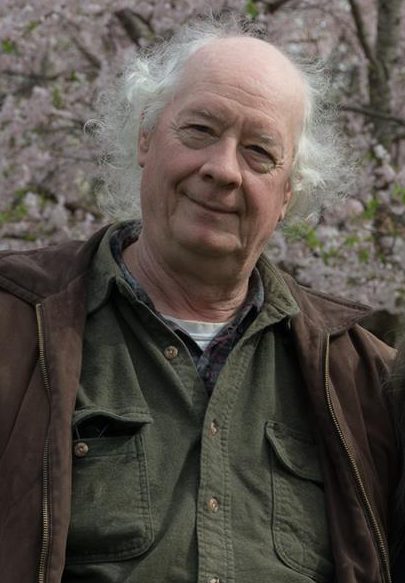
The Theory of Natural Philosophy was written in Vienna and is Roger Boscovich’s magnum opus. There are two editions. The first edition, the Vienna edition, was finished while Boscovich was living in Vienna, Austria in the years 1756-1760. In 1758, when Boscovich was age 47, the First, or Vienna, edition appeared. Later in 1763, Boscovich published a second edition in Venice. Significantly the second edition has a completely different title, which reflects a different idea which Boscovich had regarding his finalized system of natural philosophy. The second edition also contains a supplement of his comments to the poem by his friend Benedict Stay. Most citations refer to the Venice edition. The reader should look for references to his two major formative studies or dissertations, On Living Forces, 1745, and Dissertation On Light, 1748, which were early expositions of his unified field theory. In 1754, Boscovich published an important study, The Law Of Continuity, which forms a major part of his theory.
Roger Boscovich is neither a scientist or a philosopher in the modern meanings of these terms. A physicist looking for a unified field theory, as currently understood, will not find a physical theory and be disappointed, while a philosopher will be disappointed as well unless he is aware that Boscovich is a polymath. That means he employs all of the intellectual arts in his work. Readers should also appreciate that natural philosophy is not just an old outdated form of physics, it is something different altogether. It is best understood as a philosophical approach to physics. But physics is not to be understood in the modern sense, since modern physics is a particular type of natural philosophy, that claims to have solved all of the philosophical issues involved in natural philosophy. Therefore physics claims no need for philosophy, having already developed in its scientific method all of the philosophical tools it needs to produce the truth of nature. Philosophy on the other hand sees no need to delve into physics, because it is no longer of interest to philosophers. Hence they are intellectually separated into different intellectual compartments. Boscovich doesn’t approach natural philosophy this way. For him both the intellectual tools of science and philosophy are needed to answer his questions. Hence, Nedeljkovic says in Boscovich we find an emphasis upon science and poetry combined.
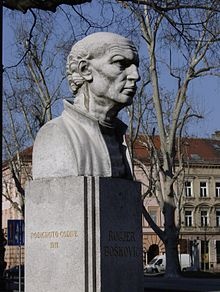
Roger Anderton is primarily interested in the unified field theory aspect of Boscovich, when he says that reading Boscovich should ignite a revolution in physics. I think differently. I think it should ignite a counter revolution against current materialist physics to revive the principles and practice of natural philosophy. But hopefully it will do both at the same time. That is Boscovich can be consulted by the physical scientist to see how a different view of space, time, matter, and force can be constructed upon principles different from those he has implicitly adopted in his thinking. While a philosopher can employ Boscovich to critically examine the ideas of physics, metaphysics and epistemology to find new ways of employing philosophy to advance science and perhaps poetry. So the reader should be aware that he will encounter themes that are both scientific and philosophical as well as personal and poetic when he reads Nedeljkovic’s book. Boscovich is developing a Theory of Natural Philosophy, that is a theory that encompasses the entire world of experience, both as it really is objectively and externally, and how we experience it and interpret it through those experiences poetically. Such an approach leads us away from the exclusive province of materialist, mathematical, scientific thinking towards spiritual philosophy and eventually religion.
It is religion that informs Boscovich’s Theory Of Natural Philosophy and reveals his purpose. “Now as regards to the Divine Founder of Nature Himself, there shines forth very clearly in my theory not only the necessity of admitting His existence in every way, but also His excellent and infinite Power, Wisdom, and Foresight, which demand from us the most humble veneration along with a grateful heart and loving affection. The truly groundless dreams of those who think that the universe could have been founded either by some fortuitous chance or some necessity of fate, or that it existed of itself from all eternity dependent on necessary laws of its own, all these must altogether come to nothing.”
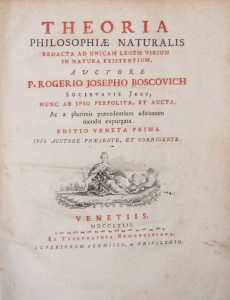
From the perspective of the history of natural philosophy we can think about Boscovich’s natural philosophy in terms of Hegel’s idea of thesis, antithesis and synthesis. Newton’s natural philosophy being the thesis, the antithesis being Leibniz’s criticism of Newton’s views, and Boscovich’s natural philosophy being the synthesis. The reader should read the following which Boscovich borrows for his method from Newton: The Rules of Reasoning in Newton’s Principia, and the Querry 31 from Optics. From Leibniz, Boscovich borrows the idea of the monad or individual particle. From the modern scientific perspective, we should interpret Boscovich’s theory as a unification of Newton’s theory of dynamic gravitation with his inadequate attempt at a theory of the micro-physical. This is a problem which continues within physics today in the failure to unite the General Theory of Relativity with the Quantum Mechanical theory.
Boscovich’s synthesis of natural philosophy, contains more than just a theory of the nature of the universal force, it is itself the actualization of the idea of natural philosophy. That is to say its method is the demonstration of its philosophic principles. It shows how knowledge proceeds out of experience, is tested by reflection through thought, and emerges as a comprehension of the physical world as experienced by men. It should not be confused with philosophy of science, or scientific method as these things are understood today. At every step it is a synthesis of principles, born out of experience and tested through reflection. As such, natural philosophy is a journey towards understanding. An approach to the natural world that seeks true knowing, more than just the knowing in the strictly scientific sense of our modern materialism. That is a knowing that is nothing but a tautology, because science produces truth only in terms of its instruments, which are themselves constructed according to laws assumed to be true in their construction. Science can only discover in the world that which was used to construct its instruments of knowledge, and nothing more. Boscovich sees more beyond the philosophical horizon when viewed through natural philosophy.
When we look for the principles in Boscovich’s natural philosophy, we have two kinds. There are the principles of rational thought and these are tempered and informed by empiricism and the hypothetical deductive method. But there must also be principles of a philosophic and poetic origin. These are much more difficult to find and the reader must be alert for them as they appear. They are evident in his ideas regarding the real and imaginary space and time concepts. In Boscovich we see a great insight in that he understands that what is real in nature is not necessarily real in the understanding of humans. He calls what is in nature real, and what we interpret and understand as imaginary. This is surely a reversal of the general opinion, which sees what is in nature as the illusion, the mysterious, and hidden, that is, something that is not at all real.
Boscovich’s insight is the antithesis of the modern physical interpretation of reality. Modern physics interprets reality as the pointer readings of instruments. This philosophy allows Einstein to define time as what a clock reads. For Boscovich, the real is in nature itself, so that the pointer readings of scientific instruments are the imaginary world that we create with the aid of our invented instruments. Thus for Einstein, time is the created realty of instrument readings on clocks, and what the clocks indicate is the phenomena that is really time. Boscovich turns this around and reasons that what is in nature is real and what we perceive about it is invented by imagination. Boscovich’s method of proof is therefore, not in the predictions of the instrument readings, for that is fallible and misleading, the proof is in the fecundity of the idea that approaches natural reality.
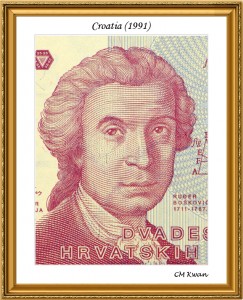
Boscovich’s scientific method is an important aspect of his philosophy that ought to have been incorporated into modern science. Boscovich is aware that reasoning by induction has limitations. He says that empirical induction used by modern science is imperfect. “When we extend that which we observe in many similar objects, in which nothing contradicts the rest, to all other objects of the same genus in which it has not yet been observed…This other genus of induction has no power of argument and is not free from error, but it offers a reasonable principle of investigation, although with possibilities of error.” Put in more modern terms, the scientific method has a flaw regarding it ability to produce truthful knowledge. In a proof, we must show both sufficiency and necessity, where the necessity implies uniqueness. Boscovich says that the scientific method produces only a possible path or sufficiently true conclusion, or path to truth, and does not produce necessary truth, or a uniquely true conclusion. That is, it proves sufficiency, or possible truth, and that means scientific proof is only one of many possible conclusions, one of which may be the uniquely true reality.
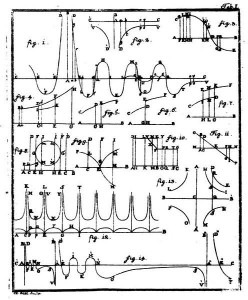
The particular method by which Boscovich derives his theory of a universal unified force, has the following elements: principle of simplicity and analogy of nature, principle of continuity of in nature, principle of limitation of empirical induction, and the principle of distinction between mathematical and physical contact. We discussed Boscovich’s critical approach to the results of experiments and the capacity of the senses to arrive at true conclusions above. The relative importance of the principles of simplicity and analogy versus the principle of continuity is a matter of dispute. Nedeljkovic places the principle of continuity in first place of Boscovich’s thinking when he says it is “the first inductive, natural and rationalist fundamental law which is the main objective and logical basis of inductive, but also of deductive conclusions, as a law which he could consider metaphysically to be postulated a priori, but which he derived by induction and proved scientifically.” However, Z. Markovic holds that “in the study of Boscovic’s natural philosophy we should discern two general principles which he constantly relied upon on his way to the new world.” These were the principle of simplicity and analogy and the principle of continuity. I. Martinovic asserts that the two principles can not be equal and that the principle of simplicity and analogy must come first, since he argues that Boscovich deduces the principle of continuity from this first principle in his formative early treatises.
Here is a brief description of Boscovich’s unified field theory or theory of atomic force points. The starting point for Boscovich’s theory is Newton’s theory which consists of three parts: gravitation, cohesion, and fermentation. Here gravitation explains how the universe is held together. Cohesion explains the attraction of matter to form solid materials, and fermentation is chemical change. The difference was that Boscovich’s innovative natural philosophy emphasized that while Newton’s philosophy needed three principles, gravitation, cohesion and fermentation, to explain nature, Boscovich accomplished this with a single unified law of force. Thereby acheiving an economy of laws, or a simplification that produced a more elegant philosophy. Thereby entailing his principle of simplicity and elegance of nature.
The particular point of criticism that forms the basis of Boscovich’s theory is his critical examination of the Newtonian theory of impact or collision. The analysis is conducted in view of the competing Cartesian theory of Leibniz. Boscovich tells the reader: “I came to the conclusion that really immediate impulsive action of one body on another, and immediate percussion, could not be obtained, without the production of a finite velocity taking place in an indivisible instant of time, and this would have to be accomplished without sudden changes or violation of what is called the Law Of Continuity; this law indeed I considered as existing in nature, and this could be shown to be so by a sufficiently valid argument.”
This analysis caused Boscovich to conceive of a different idea of the nature of force: “Causes, which generate the motion, acceleration and deceleration, I call this action, force.” Boscovich’s innovation was his insight that there had to be a repulsive force prior to the impact, and that it was this repulsive force that prevents the penetration (or compenetration as Boscovich calls it) of the colliding objects. “Then there never can be any finite force, or velocity, that can make the distance between the two points vanish as is required for compenetration. To do this, an infinite Divine virtue exercising an infinite force, or creating an infinite velocity, would alone suffice.”

Boscovich’s fundamental idea is that the impenetrability of matter is the effect of the action of a repulsive force that inheres in the fundamental atomic particle, which Boscovich conceives as a mere spatial point, or center of force action. Here there is a fundamental metaphysical paradigm change in viewpoint from the prevailing mechanical materialism towards an anti-materialism, with force as the fundamental mode of existence. The Newtonian ontology, borrowed from the materialism of the Epicurean Greek tradition, held to the idea of atoms as impenetrable hard material bodies moving in a void, while the new Boscovichian ontology proposed the viewpoint that the fundamental reality was a mode of existence, where it is the force itself that is the fundamental reality of both space itself, and the appearance of material existence. For Boscovich, it is the web, or network, of interacting and interconnected forces, acting as the network branches, that connect through the point atoms, acting as the nexus points, or nodes, of the network that is the fundamental reality of existence. For Boscovich there is no material reality per se, only the interactions of the unified field of force.
What impact did Boscovich’s Natural Philosophy have on the course of scientific thought? Opinions differ. L. Pearce Williams presents the thesis that Boscovich’s theory was the genesis of modern scientific field theory through his influence on the scientific researches of Michael Faraday. “Although he did not publicly announce his commitment to the theory of point atoms until 1844, Faraday worked within this framework from his earliest productive years.” Williams also asserts that Sir Humphry Davy, Faraday’s mentor, cautiously embraced point atoms in his 1812 publication, Elements of Chemical Philosophy. But Williams points out , “The fact that both Davy and Faraday knew that their atomic theories would be dismissed as metaphysics at best or meaningless at worst led them both to keep them in the background.” The reason was its rejection of the ontological reality of matter, replaced by an ontology of force in Boscovich’s theory.
Agassi presents a different viewpoint regarding the opposition to Boscovich. He says: “Boscovich’s ideas never received a fair treatment in public because he interpreted Newton’s theory of gravity as only approximately true…by now Boscovich’s program is obsolete…Boscovich’s program is, in the final analysis, quite unsatisfactory…because it interpreted Newton’s theory of gravity as imperfect (and also because Dalton opposed it).” Hence, despite the testimony of scientists who attest to the positive influence of Boscovich’s ideas upon modern scientific thought, this opinion is at best only marginally accurate. (The reader should refer to the conclusion of Nedeljkovic for a summary of positive scientific influences of Boscovich’s theory.)

One reason Boscovich’s theory was not dramatically influential in terms of a paradigm change is that there is the competing natural philosophy of Immanuel Kant, which probably had even more influence than that of Boscovich. Kant’s idea summarized was “it is easily proved that there would be no space and no extension if substances had not force whereby they can act outside themselves. For without a force of this kind there is no connection, without this connection no order, and without this order, no space….Matter fills a space, not by its mere existence, but by a special moving force”. In chapter 65 of his Phd Thesis, Nedeljkovic disputes whether or not Kant had priority over Boscovich with respect to the theory of atomistic dynamics or punctual atomic force centers.
The reader may at first misunderstand that Boscovich’s conception of space and time was initially part of his theory of point-force atomism. His ideas on space and time appear to be a later development, which were added to the Venice edition as supplements and as part of the Stay commentary. In his Phd thesis Nedeljkovic presents Boscovich’s conception of space and time first, as if a necessary precondition to his unified field theory. However, is seems more profitable for the reader to tackle these problems after having become familiar with the main thrust of Boscovich’s system first. There is another aspect that the reader should be wary about. That is the intimation that he will find in Boscovich’s theory of space and time a foreshadowing of Einstein’s relativity.
The idea that Boscovich is the first intimation of Einsteinian relativity is easily developed from the fact that Boscovich opposes the Newtonian conceptions of absolute space and time. But he does not actually endorse the contrary ideas of Leibnizian relative space and time either. Here is another aspect where Boscovich’s philosophy is a synthesis of the Newtonian and Leibnizian systems. The reader has to be careful here in his reading of the record. Boscovich neither endorses Newtonian absolutism or absolutely rejects it. It is a confusing viewpoint unless one grasps the idea and conception of duality, which for Boscovich is called analogy.
On the other hand, there is not much force in the argument that Boscovich’s theory had any significant effect at all upon the development of Einstein’s thought or had any impact at all upon the development of the scientific or philosophical ideas of time and space. This is quite surprising, but not unexpected. For example, The Natural Philosophy of Time by G. J. Whitrow, fails to include Boscovich in its index. This seems to be typical from a survey of books by this writer. None contained a discussion of Boscovich’s ideas regarding space and time, while those that did refer to Boscovich’s theory addressed only his unified field theory. Therefore, it is surprising to discover that Nedeljkovic implies in the title of his paper that he intends to discuss Boscovich’s natural philosophy and relativity. Perhaps Nedeljkovic means that there is a different kind of relativity contained in Boscovich’s theory that is neither the relativity of Newtonian physics or of the Einstein concept of relativity.
When reading the chapters on space time relativity, one finds no mention of concepts relating to Einstein’s relativity. Einstein denies the existence of absolute space and time. Boscovich does not deny them, but instead says the absolute is unknowable to our senses and so all we can clearly know is the relative space and time. The only similarity that one may find to Einstein in Boscovich is the assertion that: “There is no such thing in Nature as absolute rest.”
Boscovich’s natural philosophy envisions two kinds of space and two kinds of time. They are the imaginary and real. According to Boscovich, the imaginary space and time have no relation to the material or real world of things. They are human ideas only and so being ideas of human invention, arising out of intuition, they are infinite and continuous, just as the mathematics we invent to describe them. The real space and time exist outside of our experience, and so are knowable only through the principle of duality in nature. Real space is finite and discontinuous, composed of atoms, particles that are always in motion. Boscovich conceives that there are many spaces and times, because he conceives that while every reality is finite, there are multiple realities within his interconnected dynamical world of constant motion. In addition for Boscovich there is a deeper relativity. It is the relativity of the materialistic world of things and the world of the spirit. In many ways this relative world of Boscovich sounds like the world of modern quantum mechanics, which has at its fundamental paradigm an essential duality.
The essence of Boscovich’s theory space and time is a kind of duality of space and time infinite and continuous, with space and time finite and discontinuous. The first is called imaginary space and time while the second is real space and time. Regarding Space, time geometry and motion Nedeljkovic gives us a detailed analysis. But it is a difficult philosophy. Not really metaphysics, and not actually physics. He reminds us of Aristotle with his emphasis upon motion as the fundamental principle. Nedeljkovic implies that Boscovich’s theory of natural philosophy is relativistic, when he uses the word relativity in the title. But this relativity of Boscovich is beyond the physical relativity of Newtonian physics. It involves the duality of substance and spirit, as well as time and space, and matter and force.
The reader with a strong philosophical background should probably start by reading part III which gives much of the actual philosophy and the intellectual or scholarly history that is behind Boscovich’s natural philosophy. There we find that Boscovich considers that a theory is more probably correct when there is less evidence that contradicts it, than if there is more evidence that confirms it. This is entirely the opposite of the modern viewpoint. In the modern approach, all that is needed for confirmation is that it fits the observations of experiment very well. The closer the experiments match the predictions of theory the more likely it is thought to be true. Hence modern science is entirely concerned with verification of experiments and not at all with the dis-conformation. Boscovich rejects this, and his position reminds the reader of Popper’s criterion of falsification. Finally, the reader should note Boscovich’s skepticism regarding the truth of scientific knowledge. Modern science asserts that theories are factually true, while Boscovich only goes so far as to say theories are only probably valid, or invalid, but in no sense is a theory ever true in the absolute sense of being true knowledge.
To sum up, we must consider what Boscovich has to offer to the modern reader considering that his natural philosophy has been neglected by both physical science and philosophy for so long. There are people who claim that Boscovich’s ideas still are relevant to modern physics. One example being that the theory of quarks seems to be in accordance with Boscovich’s point atomsxvi. Another reason is to see what insights can be gained from new ideas regarding space, time, matter, force and relativity. However, it is this writers opinion that a study of Boscovich is important in order to rediscover the idea of natural philosophy. That is a different way to think about how we obtain knowledge of the universe whether it was created by some omnipotent spirit or not created at all. What is important is that we discover a new way of thinking, a philosophical way towards knowledge that is not cast only within the mold of modern scientific materialism that may no longer be a fruitful as it once was in satisfying the yearning of the human soul to know and understand.

There is a very meager literature regarding Roger Boscovich’s natural philosophy that is available in English. His famous treatise on Natural Philosophy is available in English from MIT press and can be downloaded from the Internet. The following books were primarily used as source material for this discussion. There is a book by Lancelot Law Whyte, that can be downloaded from the Internet, and there is a very good discussion in the book, Michael Faraday by L. Pearce Williams. Concepts of Force by Max Jammer and Faraday as a Natural Philosopher by Joseph Agassi, both provide excellent discussions of Boscovich’s theory and the influence of his ideas in the history of science and philosophy. Other important works devoted exclusively to Boscovich are: Actes Du Symposium International R.J. Boskovic 1958, Actes Du Symposium International R.J. Boskovic 1961, Ruder Boskovic, by Zarko Dadic, and The Philosophy Of Science Of Ruder Boskovic, Proceedings of the symposium of the Institute of Philosophy and Theology, S.J. Internet searches produce a lot of material but not much that is helpful in understanding his Natural Philosophy.



